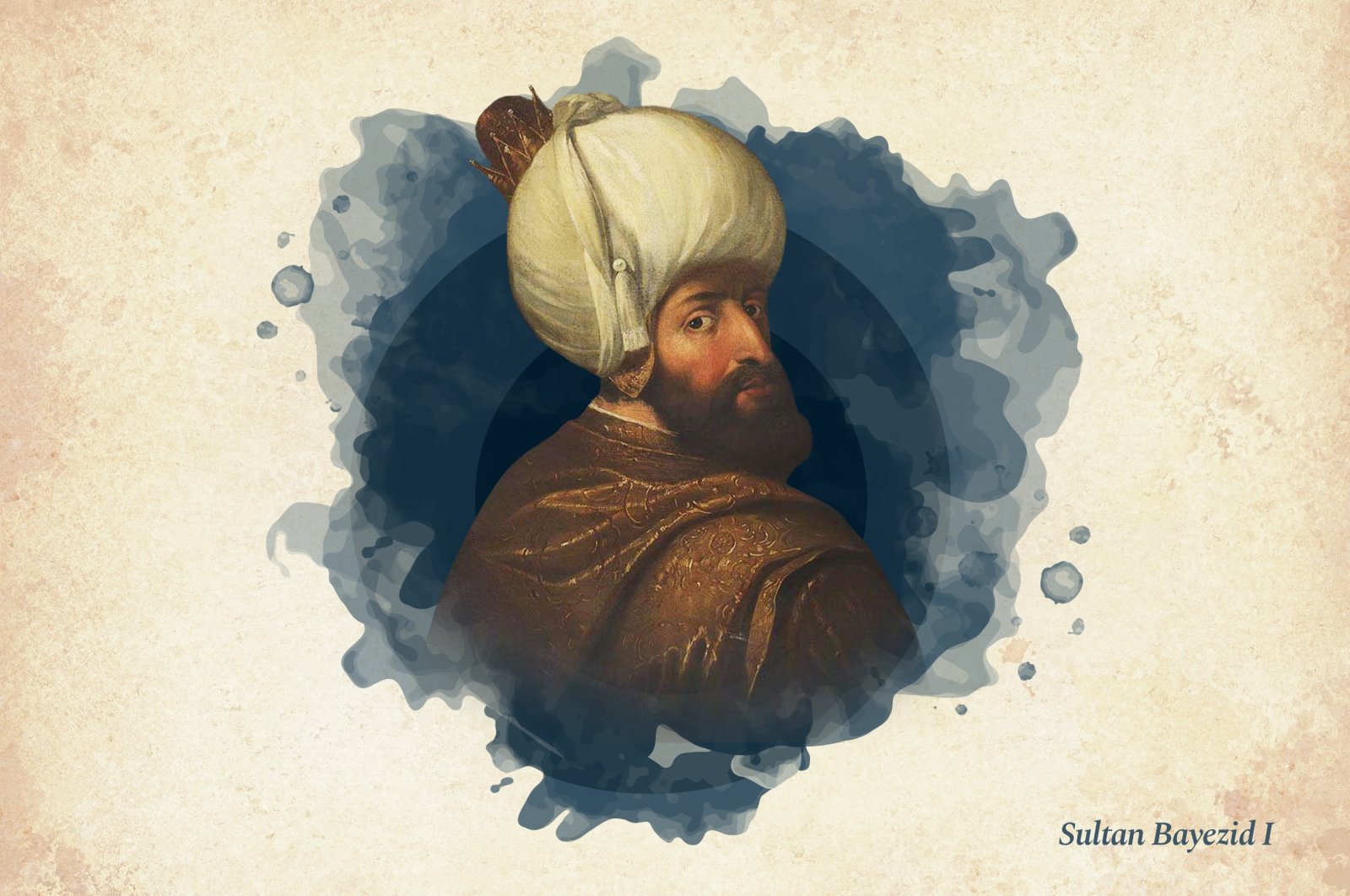
MIGHTY SOVEREINGS of OTTOMAN THRONE: SULTAN BAYEZİD I
The fourth ruler of the Ottoman throne was Sultan Bayezid I, the son of Sultan Murad I. Sultan Bayezid I was born in 1360, the year his father ascended the throne. Bayezid means "Father of Yazid," which is the nickname of Muawiya ibn Abi Sufyan, also known as Muawiya I, one of the companions (sahaba) of the Prophet Muhammad. Bayezid joined the battle against the Karamanid troops with his father in 1387. As he was a fast and impetuous soldier, the operation was successful, which gave him the title of “Yıldırım,” meaning “Thunderbolt.”
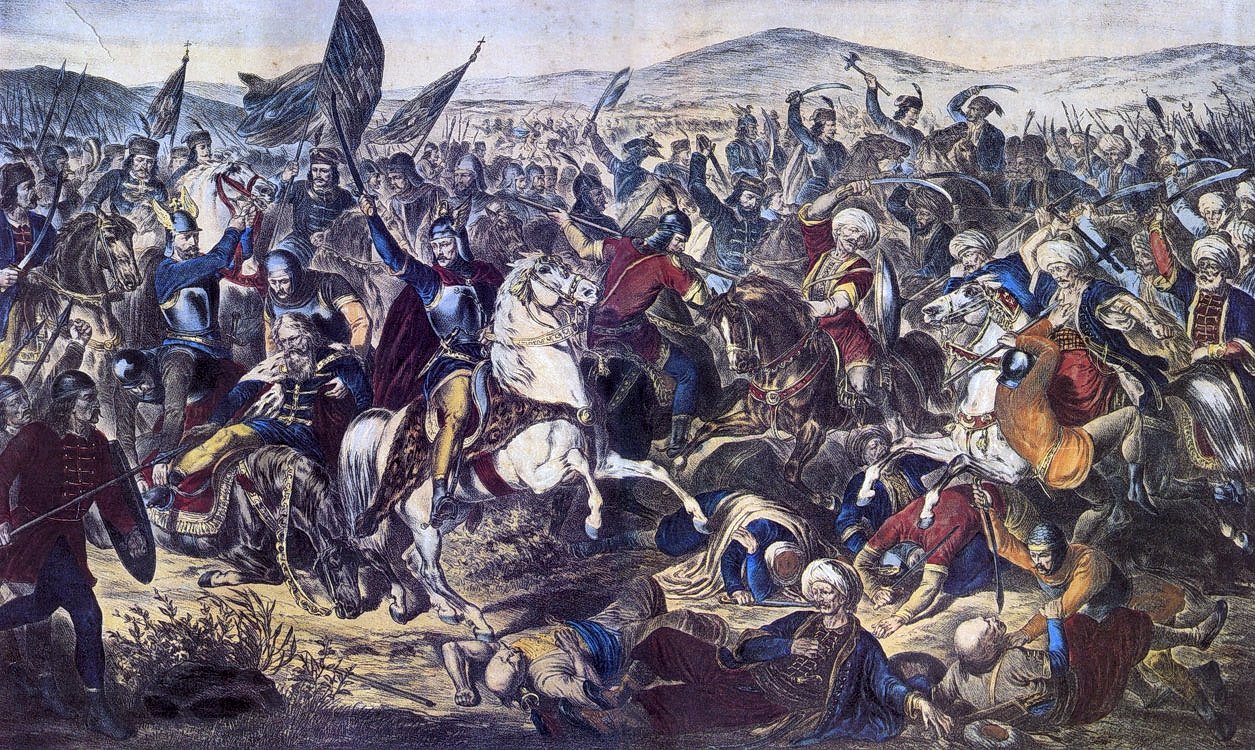
After his father Sultan Murad I was martyred in the Battle of Kosovo in 1389, he was enthroned on the battlefield by a prominent statesperson. He stayed in Rumelia for a year to reap the fruits of the success without the euphoria of victory. With great political skill, instead of destroying Serbia, he made an agreement with the sons of the king who died on the battlefield. Thus, he conquered the hearts of the Serbs, which made the Serbian people attach their loyalty to the Ottomans.
Come again!
The advance of the Ottomans in Europe aroused uneasiness, and Sigismund of Bohemia, who was the king of Hungary at that period, requested help from the pope. Upon this, an army of 130,000 crusaders, consisting of Hungarian, French, English, Polish, German, Spanish, Venetian, Rhodian and Wallachian soldiers, was organized.
Some 60,000 recruits of the army were Hungarian soldiers. The Teutonic Knights, Norway, Scotland and small Italian states joined in the corps with symbolic troops. The army aimed to take Jerusalem from the Mamluks in addition to expelling the Ottomans from Rumelia.
The Crusaders besieged Nicopolis, now a Bulgarian town called Nikopol on the Danube, plundering and slaughtering the local population in lands inhabited by Orthodox Christians. They thought that Sultan Bayezid had fled to Egypt. However, the sultan had been informed of the correspondence between the Hungarian king and the Byzantine emperor thanks to Ottoman intelligence and had learned the situation of the enemy completely. Coming to Nicopolis quickly, worthy of his nickname “Thunderbolt,” Sultan Bayezid donned Hungarian clothes and rode his horse to the bottom of the Ottoman castle with incredible courage. Talking to the castellan here, he encouraged and provided moral support to his soldiers. Then, he prepared his disciplined army of 70,000 according to the conditions of the land.
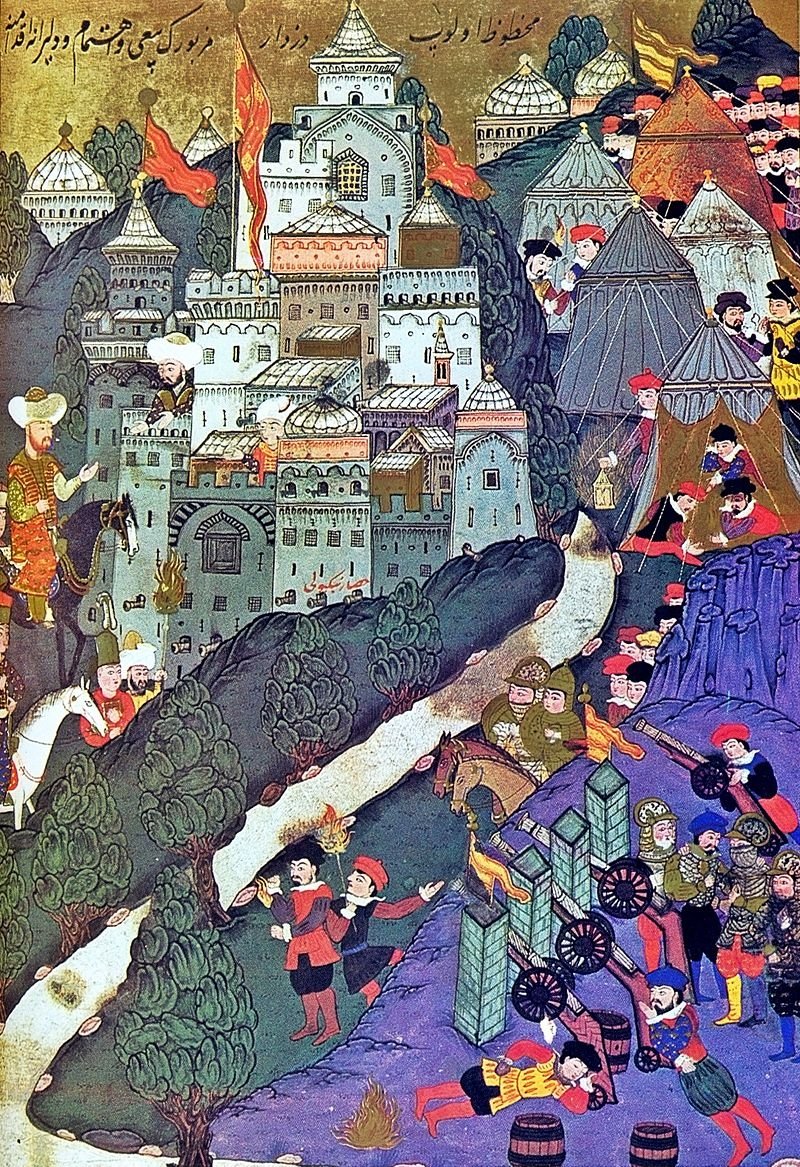
On Sept. 25, 1396, the Ottoman troops trapped the enemy army through the pincer movement, also called the crescent tactic, and destroyed it. The Crusader fleet on the Danube was sunk, 20,000 people escaped and 10,000 prisoners were taken. Hungarian King Sigismund and Henry IV, the king of England, also barely managed to save themselves by escaping. Those who jumped into the Danube drowned in this wide river due to their heavy armor. The ammunition sent by the Venetians in 70 large ships was captured. The spoils taken from the enemy in Nicopolis was so much that many charitable works were built in Anatolia and Rumelia with one-fifth of it, which fell to the sultan’s share.
The news of the defeat of the Crusaders dropped like a bombshell in Europe. A high salvation ransom was taken for the captives. Sultan Bayezid threw a banquet on the last day for these captives, who swore never to draw swords against him again. The most famous of the 27 French nobles among the captives was Jean Sans Peur (Jean the Fearless), son of the uncle of the king of France. Sultan Bayezid I had the utmost confidence in himself and said, “I return this oath to you. Go, gather armies and advance on me again. And give me the opportunity to regain the glory of victory!”
The victory was greeted with enthusiasm in the Islamic world. In his congratulatory letter to Sultan Bayezid, the Abbasid Caliph in Cairo addressed him as "Sultan-ı Iklim-i Rum" (Sultan of the Land of Romans, referring to Anatolia and Rumelia). The fact that the sultan did not attempt the conquest of Hungary, which remained defenseless, is evidence that he followed a brilliant policy and did not want to capture these lands without strengthening the Danube's surroundings.
Anatolian union
Taking advantage of the Sultan's absence as he went to Rumelia for the war, the Anatolian beyliks (small principalities) formed an alliance against the Ottomans under the leadership of the Karamanids. Consequently, Sultan Bayezid conquered the lands of the Sarukhanids, Aydinids, Germiyanids, Hamidids, Isfendiyarids and Menteshe principality without resistance. By grace, Sultan Bayezid assigned former beys of these principalities as governors to different places. While fighting in Niğbolu, he also defeated Ali Bey of the Karamanids, his sister's husband, who had betrayed both his father Sultan Murad I and himself. After the land of the Karamanids, the lands of the Kadı Burhaneddin Principality were conquered. Malatya was taken from the Mamluks, and the Dulkadir (Zulkadr) Beylik also recognized under Ottoman suzerainty. The Ottoman borders, together with the region between the Mediterranean and the Black Sea, now extended to the Euphrates. Thus, Anatolian unity took hold for the first time since the rule of the Seljuks.
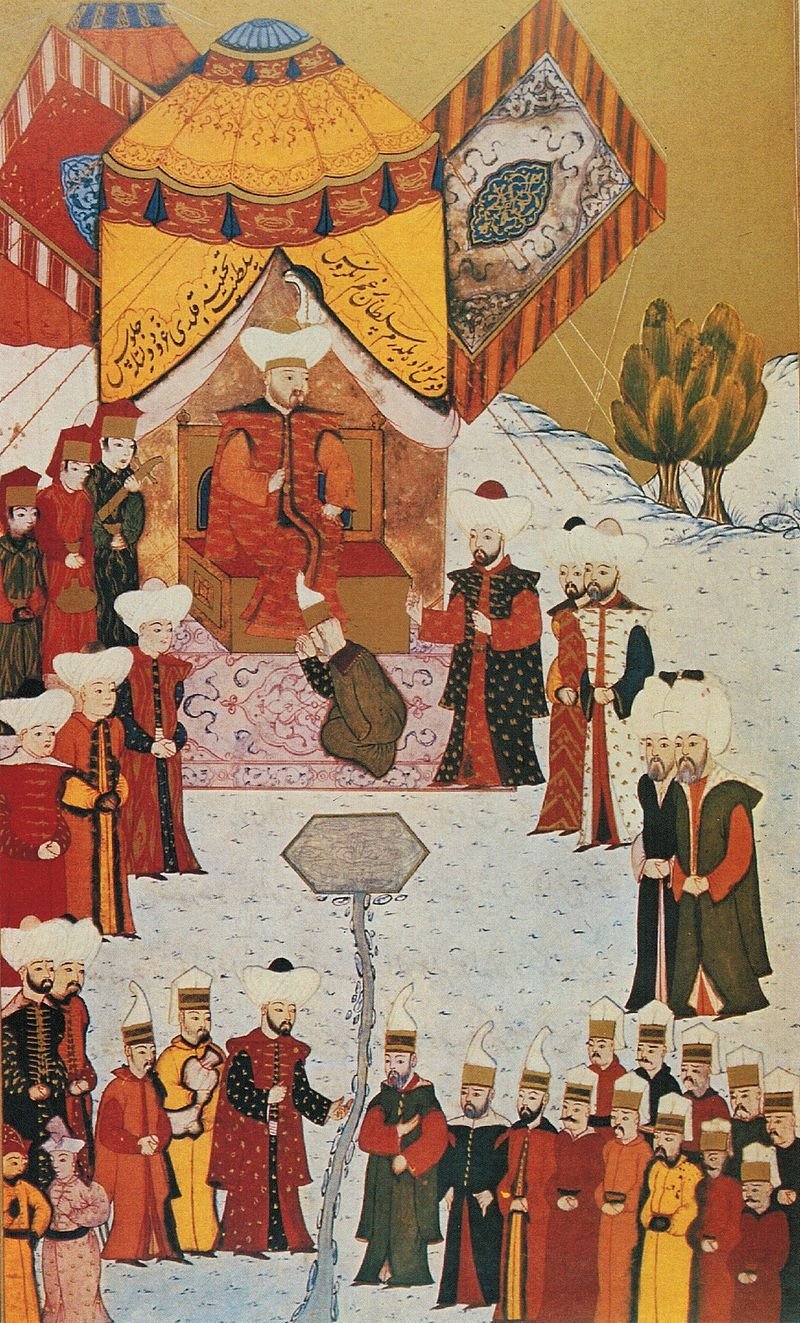
Sultan Bayezid wanted to have amicable terms with the Byzantine Empire but they made an alliance with the Crusaders every time, which caused the sultan to besiege the Byzantine lands four times. Each siege was stopped to fend off another threat. A Muslim quarter of 700 houses, having its own mosque and court was established in Constantinople. Sultan Bayezid kept the city under blockade throughout these sieges.
During the fourth siege of the city by the sultan in 1400, the fall of the city was only a matter of time. No Christian ruler could come to help the Byzantine Empire after the Battle of Nicopolis. At this very moment, an unexpected force broke in to help the Byzantines. This was Amir Timur (Tamerlane) of Mongolian origin, who seized the throne of the Chagatai Khanate and pursued the legacy of Genghis Khan.
Military leader or politician?
Timur invaded Turkistan, Iran, Iraq and Syria. Qara Yusuf, the ruler of the Kara Koyunlu state, and Ahmad Jalayir, the ruler of the Jalayirid sultanate, escaped and took refuge with Sultan Bayezid I during that period. Timur wanted Sultan Bayezid to send these two rulers back to him. Besides, he also demanded that one of the sultan's sons be sent as a hostage and Eastern Anatolia be returned to its former owners. The sultan refused these demands, and this incident became an excuse for Timur to wage war against Sultan Bayezid. Taking advantage of this, the former Anatolian beys secretly took refuge with Timur and provoked him against the sultan.
Sultan Bayezid could not establish an alliance with the Mamluks, with whom he had previously clashed due to the border conflict. Barquq, the Mamluk sultan of Egypt, kept his distance from Sultan Bayezid, fearing that he would conquer his own lands if he was victorious. The sultan thought that Timur would be concerned with the conquest of India and China and would not return to Anatolia again.
However, Timur returned and entered Anatolia in 1400. He thought that he was teaching Bayezid a lesson by taking Sivas and plundering it disastrously. But he did not advance further. The people around Timur admired Sultan Bayezid's struggle in the way of Allah. Even Timur himself described the sultan as "a great mujahed of Islam."
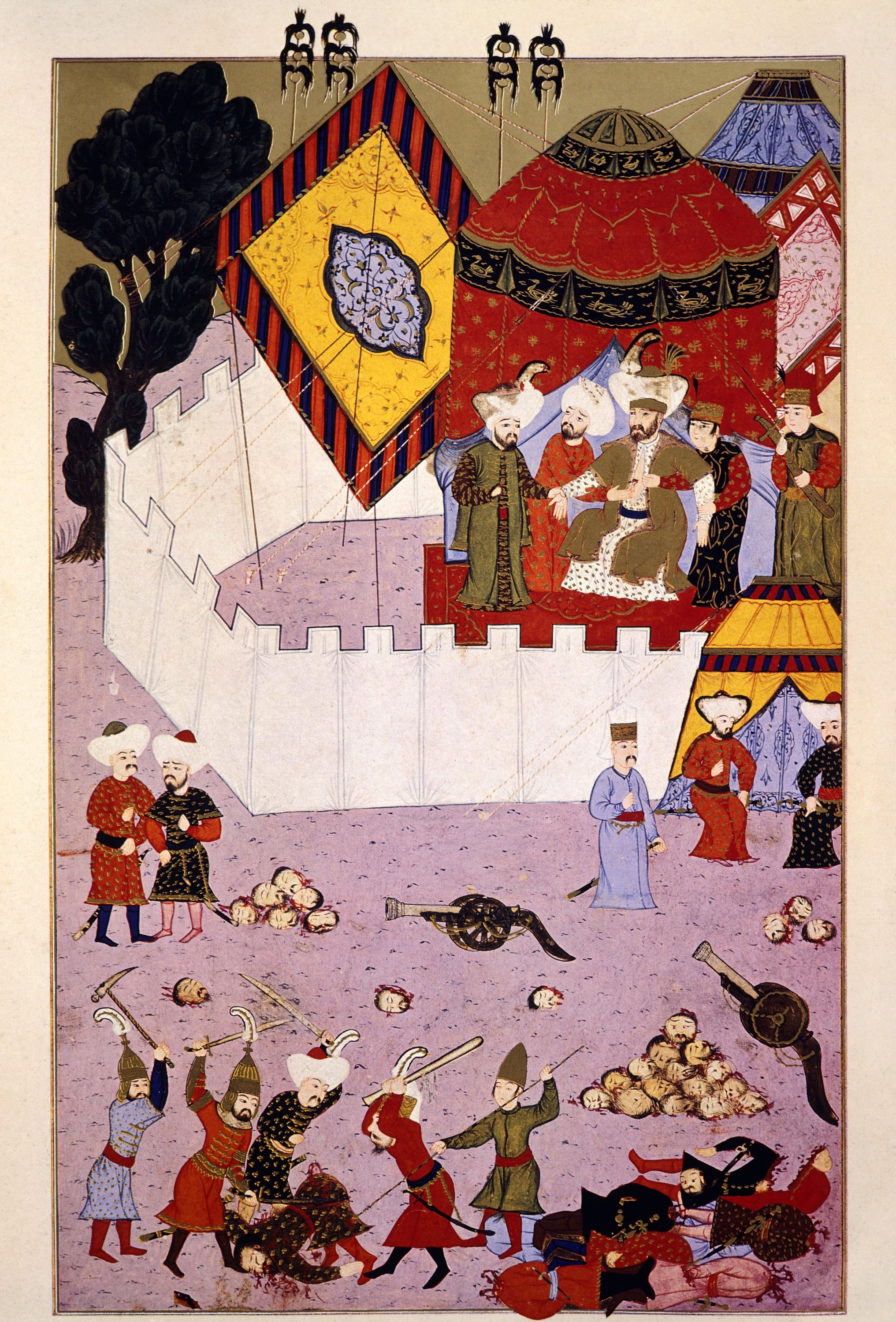
The fact that Sultan Bayezid, bursting with pride, did not give the necessary importance to Timur shows that he was not as developed a politician as he was a military leader. If he had come to an agreement with Timur, he could have avoided the trouble. But it is psychologically very difficult for a ruler like him, one who had defeated the allied European forces, to be subject to another.
In the war council, some told Sultan Bayezid that the enemy was too strong and recommended that it be worn out by guerrilla warfare instead of confronting it directly on the battlefield. The enemy would sooner or later have to leave. Others said that the enemy had to be destroyed immediately in order to prevent the destruction it may cause in the country. The sultan accepted this second idea, lifted the siege of Constantinople and marched on the enemy.
End of the road
Amir Timur, with his soldiers, exhausted his enemy Sultan Bayezid by making them move around the country. The two armies confronted on July 28, 1402, on the Çubuk plain near Ankara. Tired and thirsty the Ottoman soldiers fought reluctantly against the enemy of the same religion and sect, who spoke the same language. Nevertheless, the Ottoman cavalrymen defeated the enemy with a sudden attack in the first move. Timur put forward his reserve troops and 32 armored elephants from which bombs were thrown. Ottoman horses, who had never seen an elephant before, were startled.
Just then, the Karatatars in the Ottoman army changed sides, and the left flank of the Ottoman army collapsed. (These were the Tatar community from the Ilkhanid occupation in Anatolia.) When the soldiers of the old Anatolian principalities saw their beys on the other side, they also sided with Timur’s forces. These betrayals were a disaster for Sultan Bayezid. It was the first time he was faced with a commander who had the same genius as him. The entourage of the Sultan offered him to retreat. If the enemy did not follow, it would be considered a success, but the Sultan did not accept this offer.
Seeing the bad outcome, Shahzade (prince) Süleyman and Shahzade Mehmed withdrew with their father's advice in order to save their soldiers. The troops of the sultan's brother-in-law, the Serbian king, also suffered heavy casualties and withdrew. The Sultan was told that it was the last chance for him to escape and he replied that he would rather fight and die with honor.
At the end of the battle, Sultan Bayezid – who fell to the ground as his horse stumbled while fighting with an ax in his hand – was captured. Timur had sent letters to the rulers of Europe and boasted that he captured the man who had defeated them. The chances of victory against Timur, who came from 6,000 kilometers (3,728 miles) away, were very low.
The Battle of Ankara, in which 120,000 Ottoman soldiers fought against Timur's 300,000 soldiers for 15 hours, is the biggest field battle of the Middle Ages. Various figures between 15,000 and 45,000 are given in the sources about the losses incurred by the Ottomans. Timur, who had not lost more than 6,000 soldiers in any battle, lost 40,000 in this fight. The battle delayed the conquest of Constantinople by 50 years and the reestablishment of Anatolian unity by 100 years. What Timur won with this battle is unclear.
Real disaster
Amir Timur respected the captive ruler and took Sultan Bayezid with him wherever he went in Anatolia. He wanted to establish a kinship with him by marrying one of the Sultan’s daughters to one of his grandchildren. On the other hand, he gave Anatolian beyliks back to the former beys. The Ottoman treasury and the cities where the army passed were plundered. Bursa and Iznik were set on fire.
The real disaster was not the loss of war but the captivity of the sultan. If the sultan had withdrawn, it would have been difficult for Timur to pass Sakarya River. As soon as Timur had withdrawn, Sultan Bayezid could have made up for the losses and restored them in a few years. The governor of Amasya, Shahzade Mehmed, made an attempt to save his father. However, the men who dug a tunnel under the sultan's location were caught, which made Timur increase security measures. But rumors that he put the sultan in a cage and made his wife, a Serbian princess, a cupbearer are all made-up stories.
Sultan Bayezid could endure this state for seven months, and he fell ill with sadness. He died of an asthma attack on March 3, 1403, in Akşehir at the age of 42. His body was brought to Bursa and buried in his tomb next to the mosque he had built here. Rumor has it that the sultan was poisoned by Timur, while another rumor claimed that he committed suicide by drinking the poison in his ring. Both are complete fabrications.
Timur could not destroy the Ottoman army and gave up the idea of going to Rumelia. After several years of struggle between the shahzades, things got back on track in the Ottoman state. The state was founded on such strong principles that after this crisis passed, it became an empire in 50 years with the conquest of Constantinople.
Wealth spent for public
Sultan Bayezid's first wife was Devlet Hatun, the daughter of Süleyman Bey of the Germiyanids. He also had other marriages of a political nature. He had seven sons named Süleyman, Isa, Mehmed, Ertuğrul, Musa, Mustafa, Ibrahim and Kasım. Ibrahim and Ertuğrul died while his father was alive. Hundi Hatun, among his six daughters, married the scholar and saint Mehmed Şemseddin from Bukhara. Known as Amir Sultan, this sheikh was also a close adviser to his father-in-law. When Sultan Bayezid ascended to the throne, Amir Sultan bestowed a sword on him. His tomb is a famous tourist landmark in Bursa.
Sultan Bayezid had a round face and a light complexion with red and yellow hues. His nose was curved. He wrapped Khorasani turbans on his head like his father and grandfather and wore a velvet floral kaftan made of Bursa fabric. As his wealth increased over time, he started living an elegant life to show the dignity of his religion and the greatness of the state, but has given rise to gossip. However, he was very sensitive in spending the state's money. Before the Battle of Ankara, when he was told to distribute the money in the treasury to the soldiers to encourage them, he did not accept it.
He spent all his wealth for the welfare of the people and for development. He completed many works of charity. The most beautiful of these works is the Grand Mosque of Bursa. In addition, he commissioned a mosque that was named after him, a dar al-shifa (hospital), a madrassa, an imaret (soup kitchen), a convalescent house and a Turkish bath in Bursa. He brought a doctor from Cairo to the hospital here. He had aqueducts built and brought water from Uludağ to the city and commissioned fountains everywhere. When he conquered Alaşehir, he commissioned a mosque, a madrassa and a Turkish bath there. He also commissioned a mosque and an imaret in Edirne; a mosque and madrassa in Balıkesir; a mosque, a madrassa, a Turkish bath and a library in Bolu; a mosque, a madrassa and a Turkish bath in Mudurnu and a mosque in Beroea, Didymoteicho and Nikopolis. The sultan had imarets and zavwiyahs (lodges of derwishes) built in almost every city he conquered.
Sultan Bayezid was one of the greatest commanders of the Middle Ages. He was brave and proud. his ideal was to establish the unity of Anatolia and also to confirm Ottoman permanence in Rumeli by conquering Istanbul. He expanded the country of 500,000 square kilometers, which he received from his father, to 942,000 square kilometers in 13 years. He established the rule that qadis (judges) should live on court fees.
Never a truer word spoken
The contemporary Egyptian Arab historian scholar Ibn Hajar says: “He is the best of rulers on earth. He loves science and scholars. Someone who has a problem can easily submit it to him. Safeness in his country is so great that a person can travel alone with his possessions without being attacked by anyone.”
Ottoman historian Ahmedi says: “He was fair-minded and mature like his father and grandfather. He loved scholars and treated religious figures well. Thanks to him, there was no place left that was not prosperous in Anatolia and Rumelia. He would continue his worship. He wouldn't drink, he wouldn't even listen to an instrument." Historians such as Nişancı Mehmed Pasha and Şükrullah Efendi always spoke the same way about the sultan.
The defeat in Ankara caused so much sadness and affected the national conscience so deeply that his wife, the Serbian princess, or the vizier Çandarlı Ali Pasha were seen as the ones responsible for it. It has been claimed that they made the sultan accustomed to entertainment, which is not true. It is written in some chronicles that the sultan had been fond of entertainment but had given it up later.
Molla Fenari, the qadi of Bursa, once did not accept the testimony of the sultan on the grounds that he did not pray in congregation in a case regarding foundations. Upon this, the sultan commissioned a mosque in front of the palace and gave importance to performing the daily prayers in a congregation. A judge was able to say this in front of everyone to the face of the sultan and he also consented to this decree. While it was so easy for a medieval ruler to punish such a man, his silence means that he saw no difference between himself and the people before the law, he accepted the truth and he was fair.
One final story describes the extent of the sultan's graciousness. During the siege of Konya, the crops that people left behind while escaping were left untouched. When the horses needed food, a message was sent to the castle, the crop owners were called and the wheat was purchased. The people of Konya, who were surprised to see this, opened the gate of the castle for the Ottomans.
Önceki Yazılar
-
THE ASIA MINOR CATASTROPHE OF GREEKS17.04.2024
-
HOW DID WOMEN VEIL, AND THEN HOW WERE THEY UNVEILED…10.04.2024
-
HOW CAN HISTORY BE BELIEVED?3.04.2024
-
THE OFFICIAL MADHHAB OF THE OTTOMAN EMPIRE27.03.2024
-
WHO ORDERED THE PLUNDER OF ISTANBUL?20.03.2024
-
THE PLAYS BANNED BY SULTAN ABDULHAMID IN EUROPE13.03.2024
-
WHAT WAS THE MISTAKE OF THE UMAYYADS?6.03.2024
-
UNRAVELING THE UMAYYAD PERIOD: TRIUMPHS, TRAGEDIES, AND TRUTHS28.02.2024
-
OTTOMAN PENAL CODE AND HOMOSEXUALITY21.02.2024
-
WHAT IS LAICISM? WHAT IS IT NOT?14.02.2024